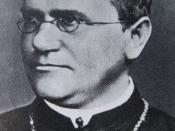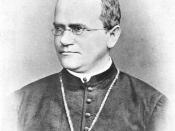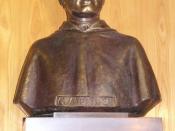Biography:
Gregor Johann Mendel was born in 1822, the second child to Anton Mendel, a peasant farmer, and Rosine Mendel, the daughter of a local gardener. This meant that he had a background in horticulture, which would help him in the future with his experiments.
At school Mendel did well and his brilliant performance encouraged his family to support his pursuit of a higher education, but their resources were limited, so Mendel entered an Augustinian monastery to continuing his education. He participated in the monastery's progressive horticulture programme and was sent to university, where he learned mathematical statistics and the effective organization of botanical experiments.
Mendel used these vital skills in his own experiments on breeding. He investigated the inheritance of various traits, such as the shape and colour of peas seeds. He saw that traits were inherited in certain numerical ratios and then came up with the idea that some types of traits are 'dominant' over other traits.
For example, if a plant received a the 'smooth seed coat' trait from one parent and the 'wrinkled seed coat' trait form the other parent, the resultant seeds would all be smooth. This is because the trait (or gene, as we now know) for smooth is dominant over the wrinkled.
From these experiments and ideas, Mendel came up with the basic laws of heredity: hereditary factors do not combine, but are passed intact; each member of the parental generation transmits only half of its hereditary factors to each offspring (with certain factors "dominant" over others) and different offspring of the same parents receive different sets of hereditary factors. Mendel's work became the foundation for modern genetics.
Explanation:
I believe that Mendel's ideas and theories were ignored for so long because his work was well 'before his time', meaning that...


